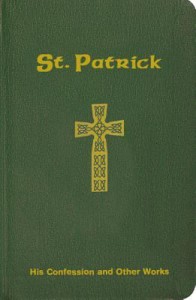 Here is a beautiful and powerful little collection of works by and about St. Patrick. I have thoroughly enjoyed and been inspired by this collection and highly recommend it. St. Patrick: His Confession and Other Works contains Patrick’s Confessio and his open Letter to Coroticus, the two writings that are accepted as coming authentically from Patrick’s pen.
Here is a beautiful and powerful little collection of works by and about St. Patrick. I have thoroughly enjoyed and been inspired by this collection and highly recommend it. St. Patrick: His Confession and Other Works contains Patrick’s Confessio and his open Letter to Coroticus, the two writings that are accepted as coming authentically from Patrick’s pen.
Patrick’s Confessio is a moving if brief overview of his life written late in his life at a time when his detractors were seeking to undermine his reputation. Obviously, this wounded Patrick, but his Confessio does not bear the marks of bitterness or some petty need to level the books. Rather, this confession reads like a work of praise for the marvelous things that God had done throughout Patrick’s amazing life. It is a compelling chronicle of one man’s conversion and clear sense of calling. Patrick showed a courage throughout his life, particularly in his evangelistic efforts, that will not fail to inspire the modern reader. His humility is apparent and also quite moving to see. It is not that Patrick did not have a sense of just what God had accomplished through him. It is just that Patrick did not see this as evidence of his own greatness but rather of God’s.
The Letter to Coroticus is a blistering broadside against a Roman British General who had come to Ireland and either killed or carried into slavery numerous Irish people, many of whom had been recently baptized. Patrick rebukes Coroticus and all who showed him favor, pointing out that for any Christian to participate in the enslavement and murder of his brothers and sisters in Christ was a crime of unimaginable evil. Even so, Patrick calls Coroticus and his men to repentance, a fact, the editor points out, that led to the idea of perpetual repentance within Catholic theology as opposed to a one time repentance for all pre-baptismal sins.
Patrick Francis Cardinal Moran’s biography of Patrick is also included in this volume and it is extremely well done, concise, and inspiring. He includes Patrick’s “Breastplate” or “Lorica” prayer, which is just absolutely beautiful. There are also a few other documents included as well that would be more interesting to Catholic readers than they were to me.
This is a nice little collection, and a great introduction to the life of St. Patrick of Ireland.
